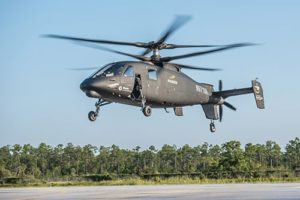
The U.S. Army's Cross-Functional Team on Future Vertical Lift is examining an acceleration of the Future Vertical Lift (FVL) program, as the service on April 23 awarded five industry contracts for the development of the Future Attack Reconnaissance Aircraft. The Army awarded five Other Transaction Authority (OTA) for Prototype Agreements for the aircraft design, build, and test of FARA to an AVX/L3 [LLL] team; Bell [TXT]; Boeing [BA]; Karem Aircraft; and Sikorsky [LMT]. AVX, which teamed with L3 to offer a…

 By
By 











